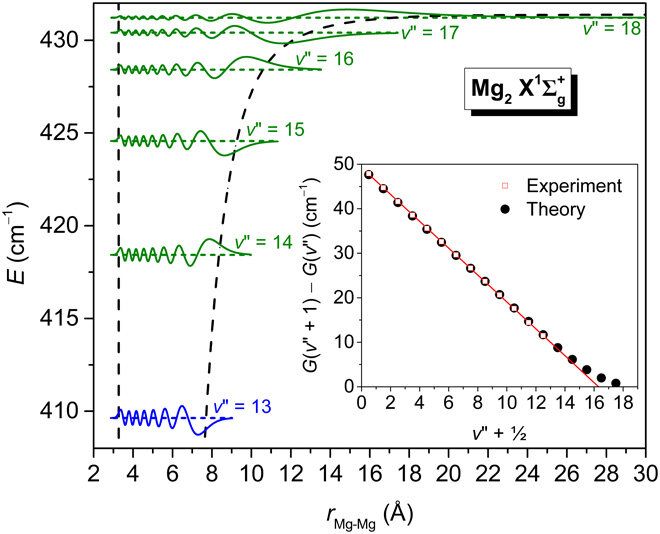High vibrational states of the Magnesium dimer (Mg2) are an important system in studies of fundamental physics, although they have eluded experimental characterization for half a century. Experimental physicists have so far resolved the first 14 vibrational states of Mg2, despite reports that the ground-state may support five additional levels. In a new report, Stephen H. Yuwono and a research team in the departments of physics and chemistry at the Michigan State University, U.S., presented highly accurate initial potential energy curves for the ground and excited electron states of Mg2. They centered the experimental investigations on calculations of state-of-the-art coupled-cluster (CC) and full configuration interaction computations of the Mg2 dimer. The ground-state potential confirmed the existence of 19 vibrational states with minimal deviation between previously calculated rovibrational values and experimentally derived data. The computations are now published on Science Advances and provide guidance to experimentally detect previously unresolved vibrational levels.
Background
Weakly bound alkaline-earth (AE2) dimers can function as probes of fundamental physics phenomena, such as ultracold collisions, doped helium nanodroplets, binary reactions and even optical lattice clocks and quantum gravity. The magnesium dimer is important for such applications since it has several desirable characteristics including nontoxicity and an absence of hyperfine structure in the most abundant 24 Mg isotope that typically facilitates the analysis of binary collisions and other quantum phenomena. However, the status of Mg2 as a prototype heavier AE2 species is complicated since scientists have not been able to experimentally characterize its high vibrational levels and ground-state potential energy curve (PEC) for so long.
